main-dev_brc_samoyed_play-group_2019may15_0222.jpg

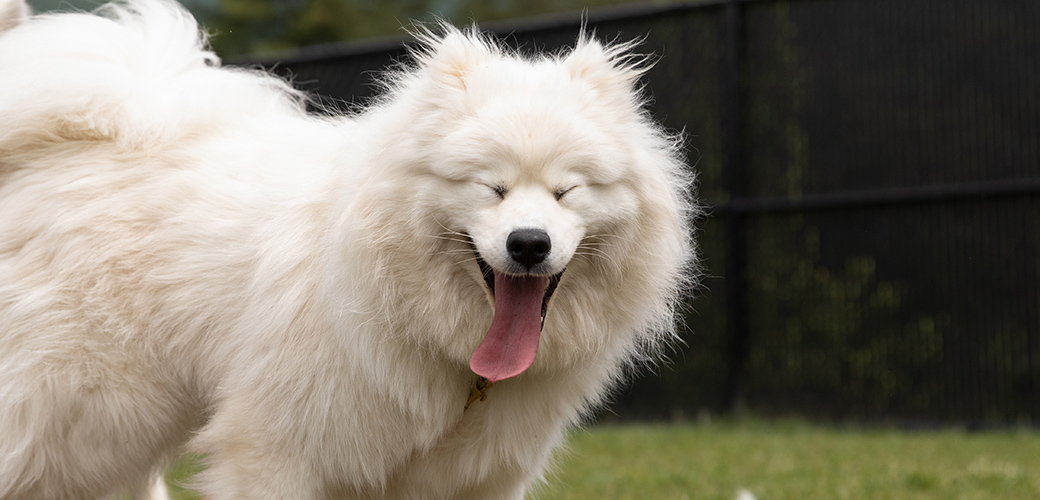
It was an appalling scene—nearly 160 dogs found living in inhumane conditions and neglect. In November 2018, the ASPCA assisted authorities with the rescue, evidence collection, transport and sheltering of these dogs from a commercial breeding facility, often referred to as a puppy mill, in Worth County, Iowa. Most of the dogs were living in filthy kennels, many of which were overcrowded and covered in feces. It was snowing, temperatures were below freezing, and the dogs had no water to drink—it had frozen into ice—and little to no food.
r-fir_puppymill_worthco_ia_nov1218_0224.jpg

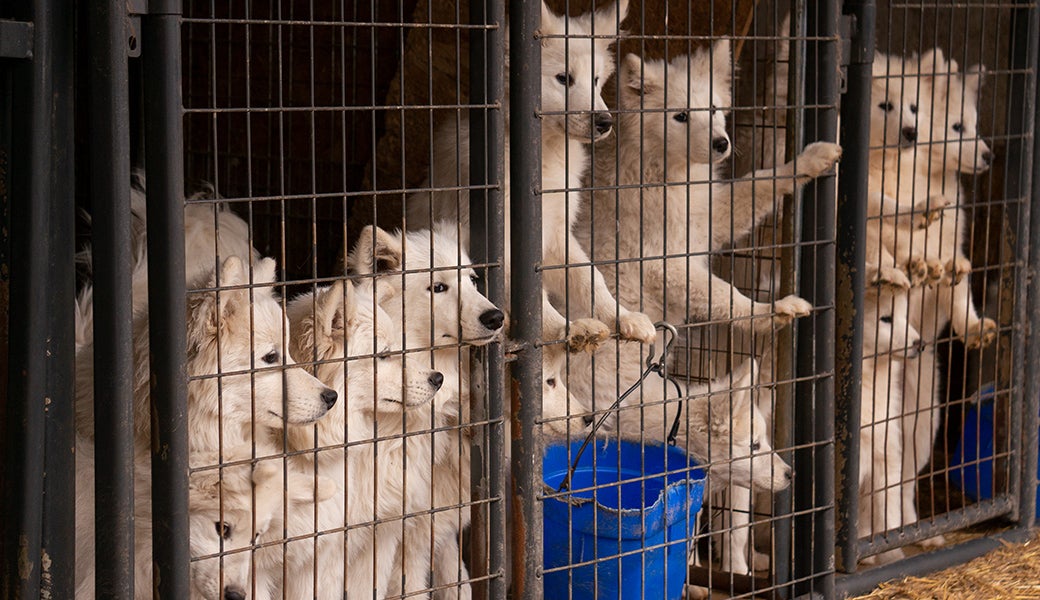
Tragically, for puppy mill victims, scenes like this are common. Inhumane breeding facilities put profit over the well-being of their animals, and these innocent victims suffer as a result. If help doesn’t come, the outcome is often grim. And when help does arrive, the road from rescue to recovery can be long.
What some people don’t realize is that those physical problems that we see when we take animals out of that situation—we can often fix those things,” Kristen Collins, Vice President of the ASPCA’s Behavioral Rehabilitation Center explains, “Sometimes the behavioral damage that is done, however, is deadly.”
After treatment and care, some of the rescued Samoyeds were placed in loving homes through shelters and rescue groups across the country. But an overwhelming number of these dogs were extremely fearful and needed specialized treatment through the Rehab Center. Kristen tells us, “Even with this wonderful facility and the resources we have here, we had to trickle these dogs in over several months because there were just so many who were behaviorally damaged.”
r-fir_puppymill_worthco_ia_nov1218_0057.jpg

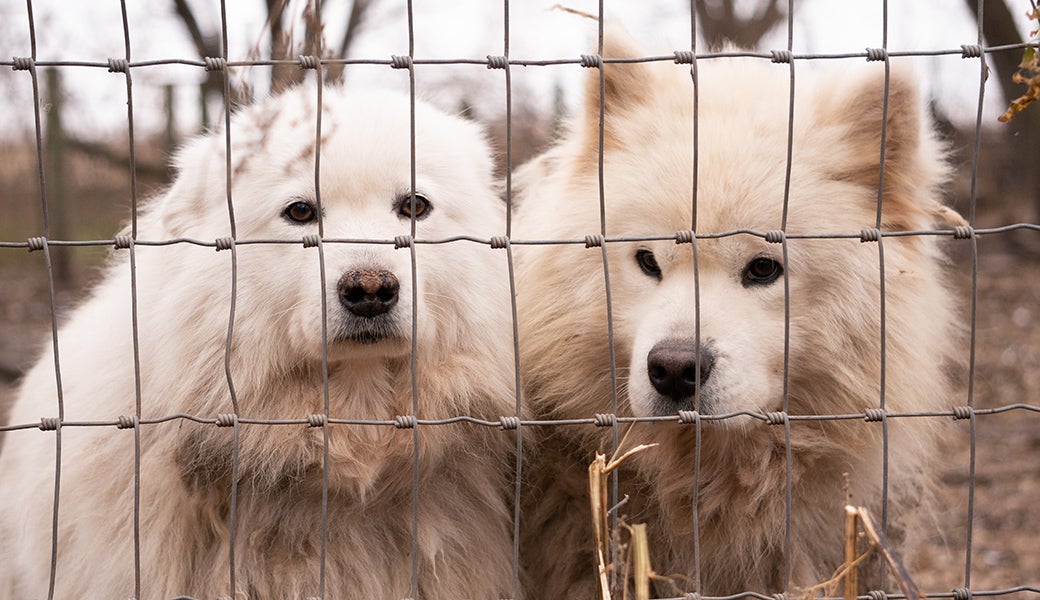
Even today, two Samoyeds are still in recovery at the Rehab Center more than a year after their rescue. Despite the gradual journey, this lifesaving program has become their second chance at life.
“Dogs from puppy mills can prove really challenging to rehabilitate because of the extreme isolation they come from,” says Kristen, “It’s been our experience that many of them do recover, however. In fact, the vast majority of them recover.”
Maybel: The Class Clown
When one of the Samoyeds, Maybel, arrived at the Rehab Center she was very vocal, barking loudly at any staff who approached her kennel. Laura Linneman, a Behavior Rehabilitation Specialist, recalls her first interaction with Maybel: “We had to carry her to the evaluation room and she was frozen, almost to the point of going catatonic for her first evaluation.”
Maybel was struggling. She wasn’t connecting with people and showed only mild interest in other dogs, which posed a unique challenge for the Rehab Center team. They often rely on helper dogs to guide dogs in treatment, showing them that it’s not so scary to take a treat from a human or play fetch with a toy. But Maybel wasn’t interested in dogs or people.
r-dev_brc_samoyed_asheville_nc_may14_2019_0421.jpg

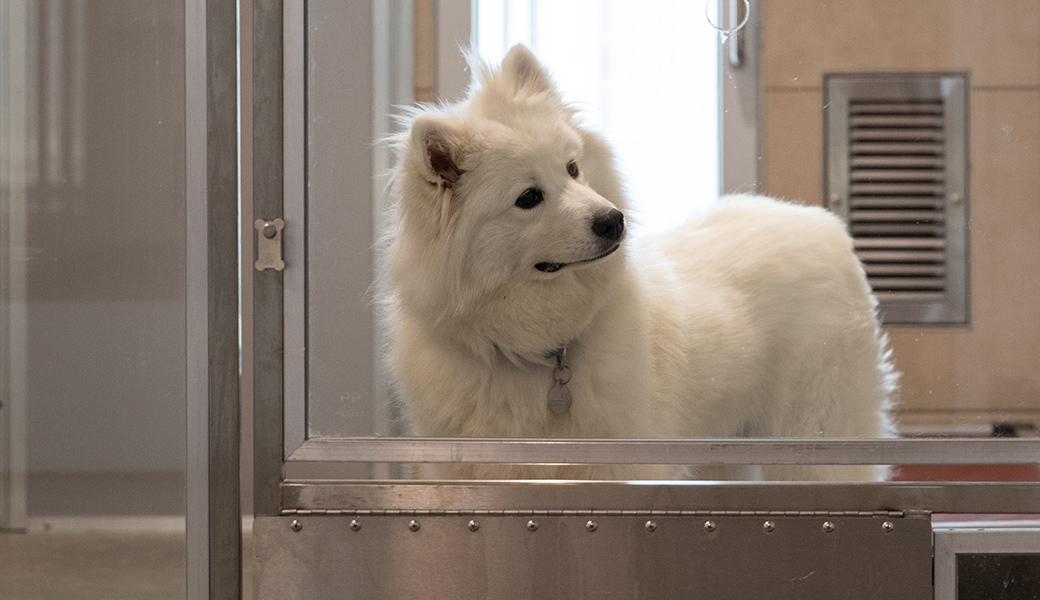
What she was interested in were toys and treats! Our team would often catch glimpses of Maybel playing with toys in her kennel by herself. With this knowledge, the team could incorporate toys and treats into Maybel’s treatments so she could progress through the program and become closer to ultimately joining a loving home.
Then, there was a breakthrough moment for Maybel. “We were doing some handling treatments and it’s like a lightbulb went off in her mind and she was like, ‘I kind of enjoy this,’” Laura recalls. “You could see her face soften as she leaned in a little bit and seemed to enjoy the touch.”
r-dev_brc_samoyed_asheville_nc_may14_2019_0336.jpg

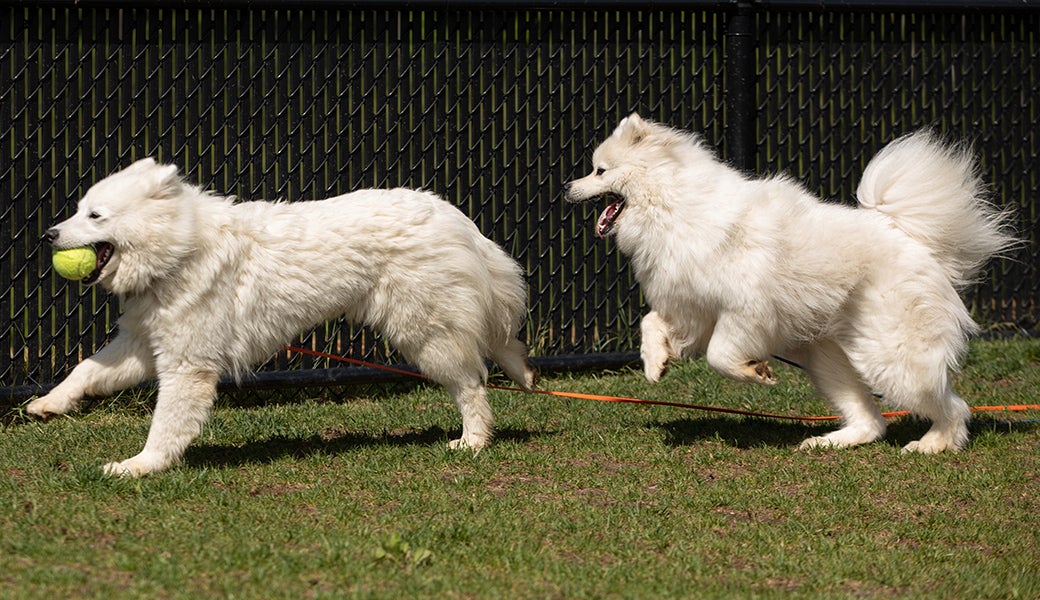
Maybel bounds after her friend Ivory in pursuit of one of her favorite toys—a tennis ball.
Starting at that moment, Maybel became very engaged with the team. Her behavior improved as she found new joy in interacting with people and playing with other dogs. Maybel even became known as the class clown, entertaining everyone with her silly antics and playful nature. Her colorful personality was on full display as she finally became comfortable and learned to trust people more and more.
After about 10 weeks of treatment, Maybel graduated from the Rehab Center and joined a very devoted home. Eliana A., Maybel’s adopter, tells us that “life for Maybel now is 100% love.”
r-image_16.jpg

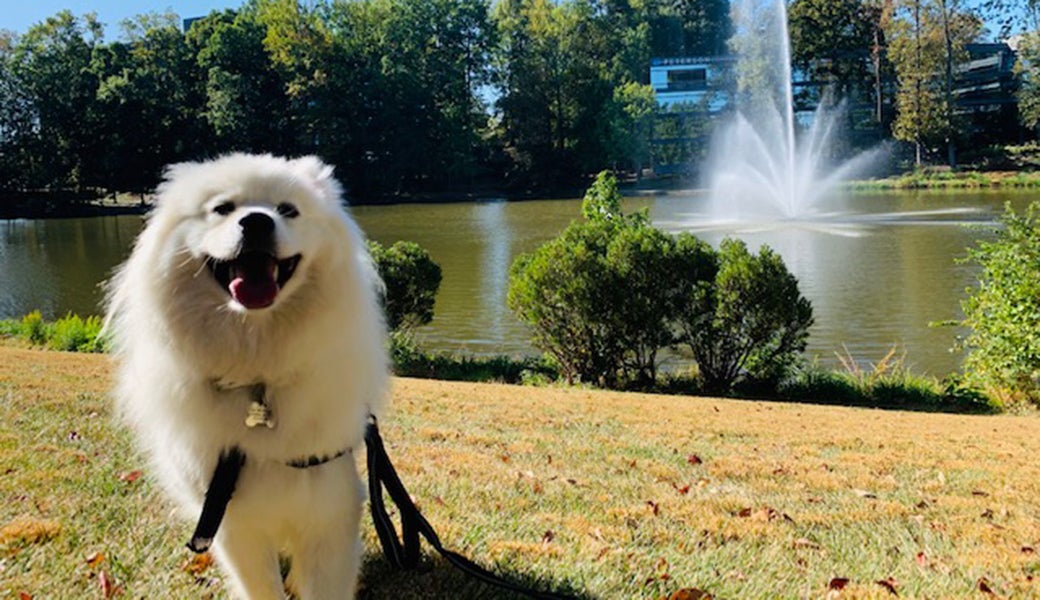
Maybel is all smiles after a walk in the park with her new adopters, Eliana and PJ.
From Catatonic to Courageous
“Extremely fearful. Sat frozen in corner near scribe table. Catatonic, eyes closed.”
This is how Casper, another rescued Samoyed, was described in her initial evaluation.
Like Maybel, she needed significant help, training, patience and time to get her to a place of comfort, trust and confidence.
“Casper did not want to be handled in any way,” recalls Monica Body, a Behavior Rehabilitation Specialist who worked closely with Casper.
If a handler tried to place a leash on Casper, she would become extremely fearful and cower in a corner of her kennel, trying to avoid the leash. “If you reached out to try and touch her, even just to offer food, she would become extremely fearful,” Monica says.
But like Maybel, our team worked diligently with this fearful pup—and with positive reinforcement, Casper, too, began to make progress.
She loved treats and being with other dogs, and when she realized that putting on a leash meant she was going outside to the play yard to see her friends and enjoy some delicious snacks, her severe fear and anxiety lessened.
r-dev_brc_samoyed_asheville_nc_may14_2019_0300.jpg

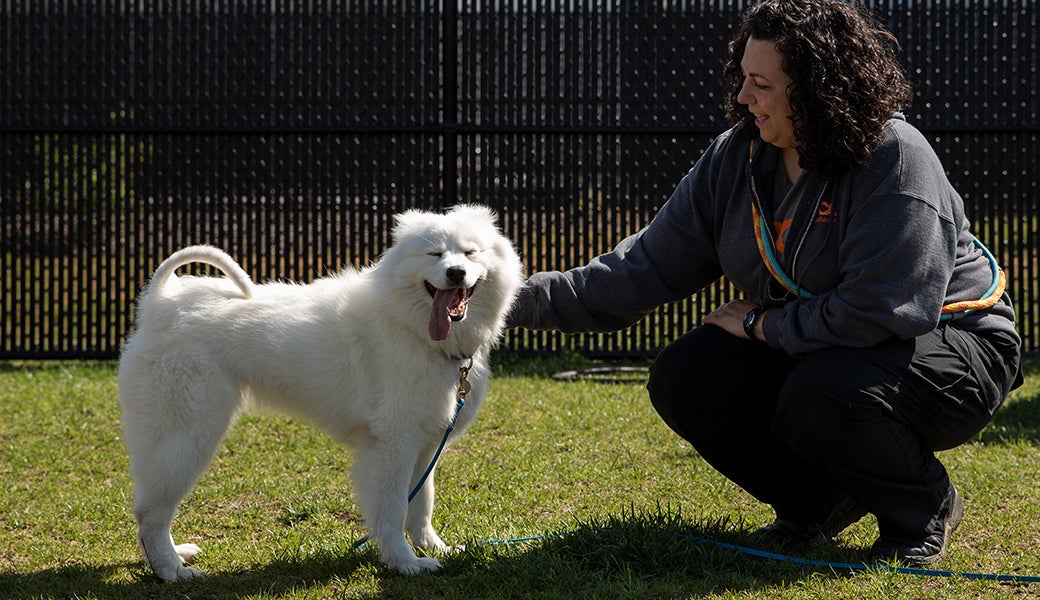
Casper thoroughly enjoying a scratch behind the ears from Monica.
In her final evaluation, our team noted Casper’s newfound spirit and true personality. It said: “Casper is a young, lively girl who enjoys playing with other social dogs. She will make a wonderful companion.”
And that she did.
Her adopter, Morgan G., who has changed Casper’s name to Rory, tells us: “We absolutely adore everything this dog does. She has the most brilliant take on life—everyone is her friend. She’s got a big personality and loves to show it. We call her a diva.”
Rory is thriving in her new home, constantly playing and cuddling with her three canine siblings and enjoying walks with her pet parents. She is unrecognizable from the panicked, catatonic dog we once knew.
r-6d41fd8592fe4602ae71ac4f76f50d9f.jpeg-2.jpg

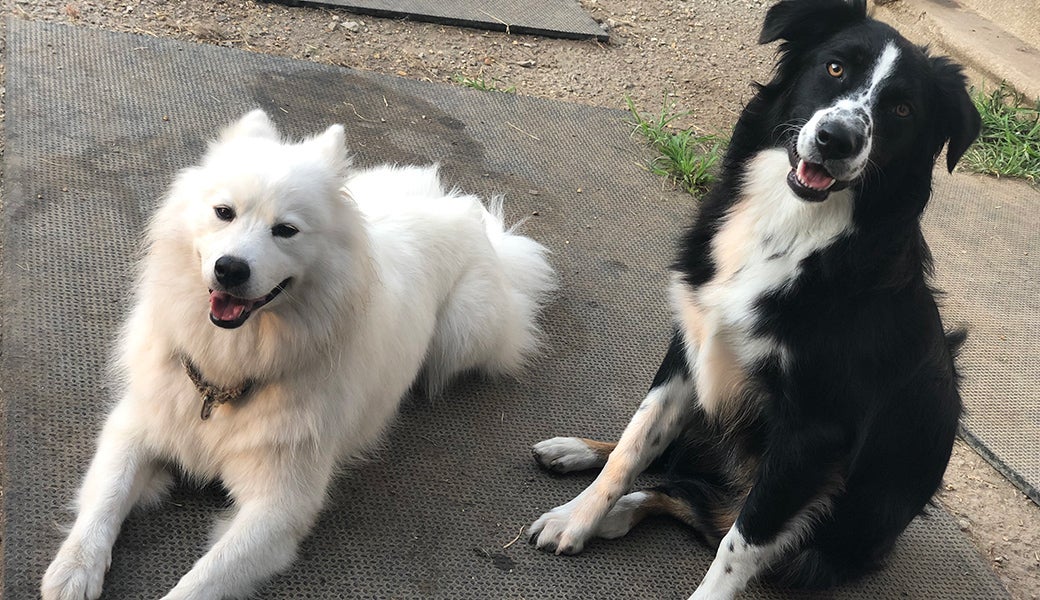
Casper, now known as Rory, in her new home with her canine sibling, Dill.
Making Significant Strides in Animal Welfare
The ASPCA Behavioral Rehab Center is the first and only facility dedicated solely to rehabilitating extremely fearful dogs. Maybel and Casper are just two of the hundreds of success stories we’ve seen since the start of this first-of-its-kind, lifesaving program in 2013.
Thanks to this remarkable program, fearful dogs saved from puppy mills or other forms of cruelty and neglect are getting second chances that they might never have otherwise received.
Maybel’s and Casper’s journeys from rescue to rehab, and eventually to loving homes, show us that for even the most fearful victims of neglect, the will to hope and love are never lost.
Additionally, we’re pleased to be able to report that justice was served for these puppy mill victims. The defendant from this case was recently found guilty on all 14 counts of animal neglect.
r-dev_brc_samoyed_play-group_2019may15_0071.jpg

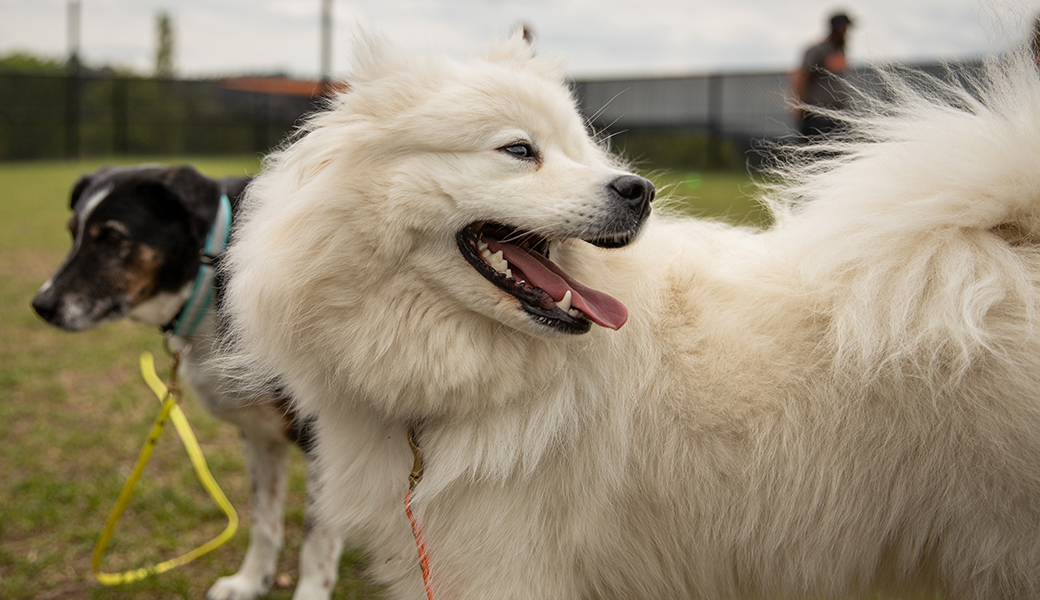
Thanks to our supporters, we continue to work every day to end cruel breeding practices and fight for justice for abused animals while providing critical rehabilitation to victims of this inhumane industry. We are also continuously collaborating with shelters and rescue groups nationwide to elevate behavioral healthcare for more vulnerable and suffering animals.
There are so many animals who need the ASPCA—and you can help us reach them. Please consider a generous gift today to help the ASPCA rescue and protect our nation’s most vulnerable animals. We can’t do this lifesaving work without you by our side.
Every day we fight to save animals from cruelty, protect vulnerable animals under the law and hold animal abusers accountable. But we can’t do it without you. Please be a voice for defenseless animals with your donation now.
Source: Read Full Article
